Do you have a question about the Viessmann Vitocrossal 300 Series and is the answer not in the manual?
Installation, adjustment, service, and maintenance must be performed by a licensed professional heating contractor.
Air contaminated by chemicals can cause poisonous by-products and damage equipment. Avoid storage of chemicals near the boiler.
Improper installation or maintenance can lead to flue products entering living space, containing poisonous carbon monoxide gas.
Equipment requires adequate combustion and ventilation air for safe operation. Ensure provisions are met.
Never operate the boiler without an installed venting system. Improper venting can cause carbon monoxide poisoning.
Details codes, technical literature, and working on equipment requirements for safe and compliant installation.
Guidelines for selecting and preparing the mechanical room for boiler installation, including air quality and temperature.
Step-by-step guide on filling the heating system with water, including checking expansion vessel pressure.
Verifies the 120VAC power supply connection and neutral conductor requirements.
Guides the installer through initial boiler setup steps like language, time, units, and system configuration.
Information on selecting the correct gas type (Natural Gas or LPG) for boiler operation.
Step-by-step guide for converting the boiler from natural gas to liquid propane gas operation.
Procedures for measuring gas static and running pressures for correct boiler operation.
How to limit the maximum output for heating operation via boiler coding card settings.
Ensure all heating and DHW connections are pressure tight to prevent leaks.
Procedure for measuring CO2 and O2 content to ensure optimal combustion quality.
Performing a leak test on the direct vent system by measuring CO2 in the coaxial gap.
Steps to ensure the heating system is ready before initiating boiler operation.
Steps for removing the burner and inspecting its gasket for damage or wear.
Procedure for checking the burner mesh assembly and refractory for damage and replacement.
Guide for inspecting, cleaning, and adjusting ignition and ionization electrodes for proper operation.
Verifying the diaphragm expansion vessel's pre-charge pressure and overall system pressure.
Measuring CO2 and O2 content at the vent pipe to ensure optimal combustion quality.
Verifying the proper operation of safety devices like low water cut-offs and pressure relief valves.
Performing leak tests on gas piping and fittings to ensure safety and prevent gas escape.
How the control unit calculates boiler water setpoint based on temperature and heating curve.
Details DHW heating activation, burner operation, and temperature differentials based on tank temperature.
Explains how to adjust the heating curve slope and shift for optimal system performance.
Coding settings for heating circuits, including frost protection, economy modes, and pump logic.
Advanced coding parameters for heating circuits, covering economy functions and pump control logic.
Configuration of heating curve slopes and levels for individual zone circuits.
Accessing and scanning operating data, system versions, and connected components.
Performing relay tests to control and verify the output functions of system components.
How to identify and interpret fault codes displayed by the control unit, including their system behavior and causes.
Detailed table of fault codes, their system behavior, causes, and corrective actions.
Procedure for testing the resistance of the outdoor temperature sensor and replacing it if faulty.
Testing resistance of various temperature sensors (DHW, low loss header, heating circuit, room) against provided curves.
Procedure to test the boiler temperature sensor's resistance and replace it if necessary.
Testing the flue gas temperature sensor's resistance and its role in locking out the boiler.
Explains various control functions like heating program changeover, external blocking, and demand, and their coding.
Detailed breakdown of the burner's operational phases, timings, and safety checks.
Comprehensive table of technical specifications for boiler models, including input, output, pressures, and temperatures.
Continuation of technical data, including dimensions, flue gas temperatures, and sound ratings.
Critical safety warnings and step-by-step procedures for starting and operating the boiler.
Step-by-step guide for safe start-up, operation, and setting of controls for the boiler.
Procedure for safely shutting off the gas supply to the appliance, including steps for service.
| Model | Vitocrossal 300 Series |
|---|---|
| Category | Boiler |
| Boiler Type | Condensing Boiler |
| Heat Exchanger Material | Stainless Steel |
| Fuel Type | Gas |
| Efficiency | Up to 98% |
| Installation Type | Floor-standing |
| Control System | Vitotronic Control |
| Modulation Range | 1:10 |
| Water Content | Varies by model, consult product brochure |
| Dimensions | Varies by model, consult product brochure |
| Weight | Varies by model, consult product brochure |
| Operating Pressure | Up to 3 bar |

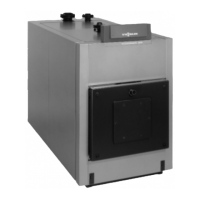
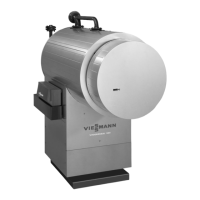
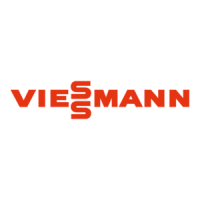


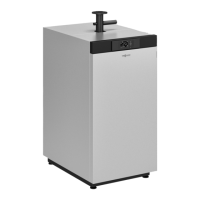

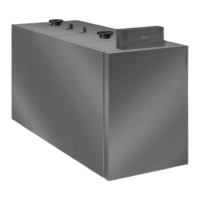

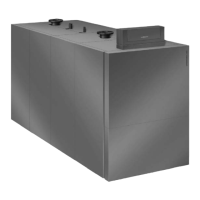

